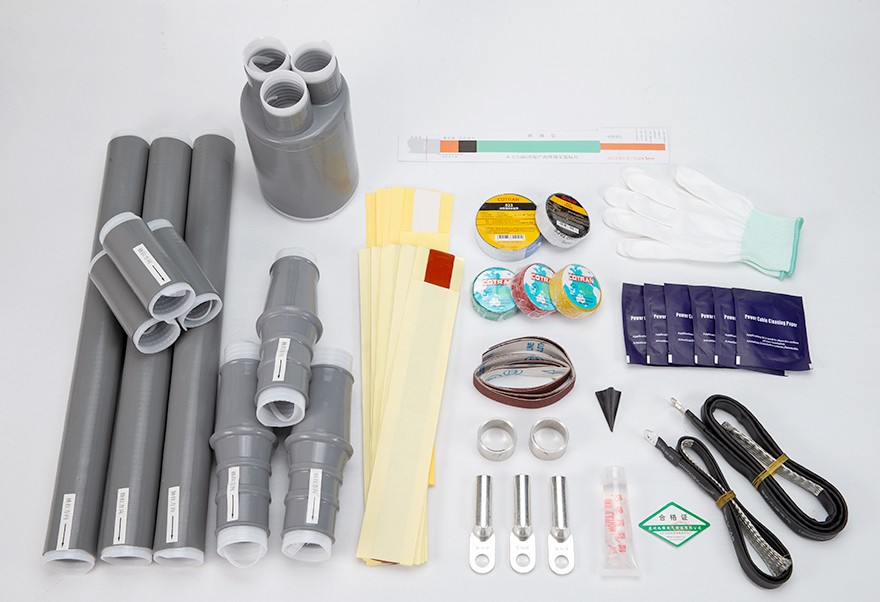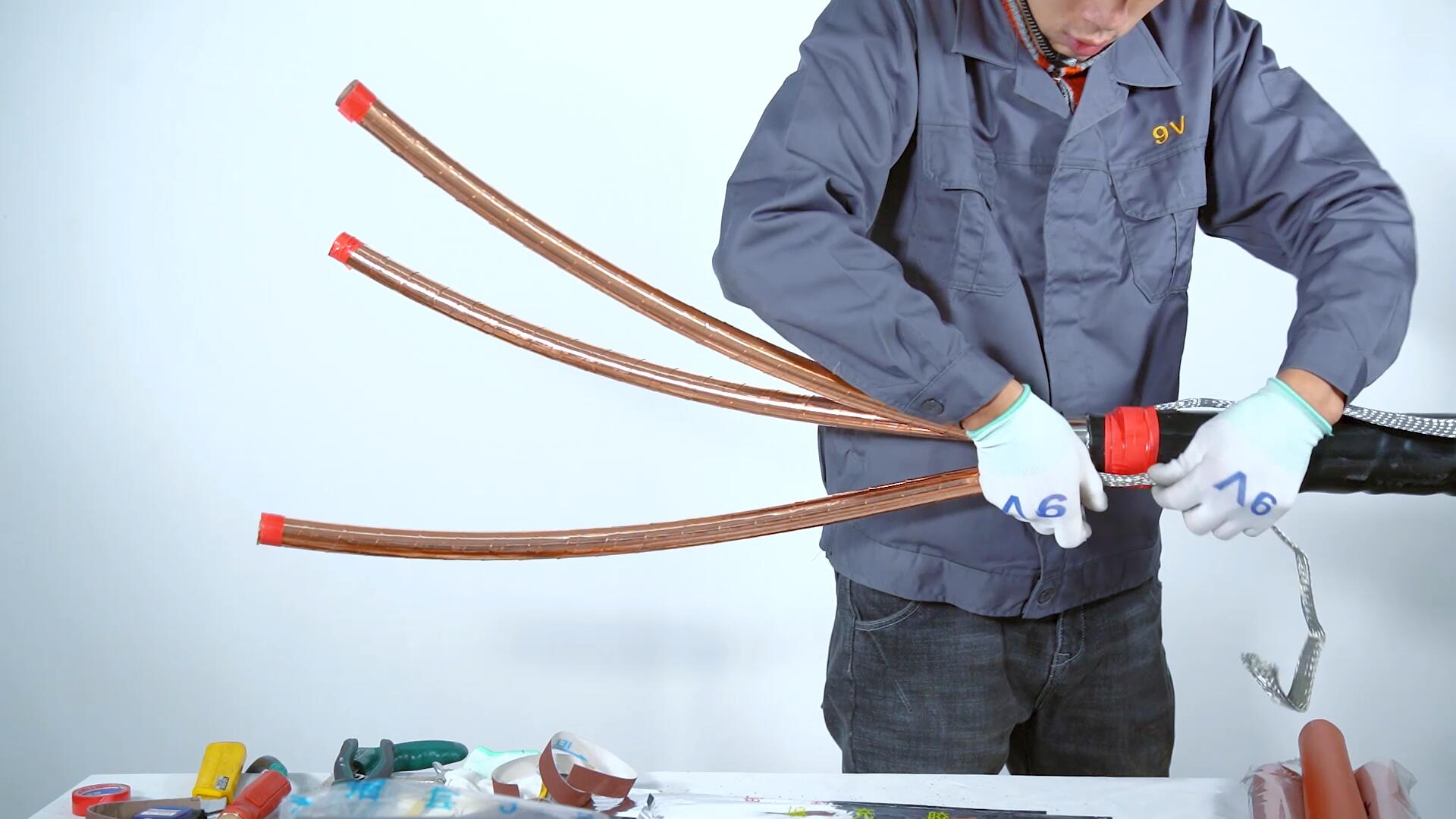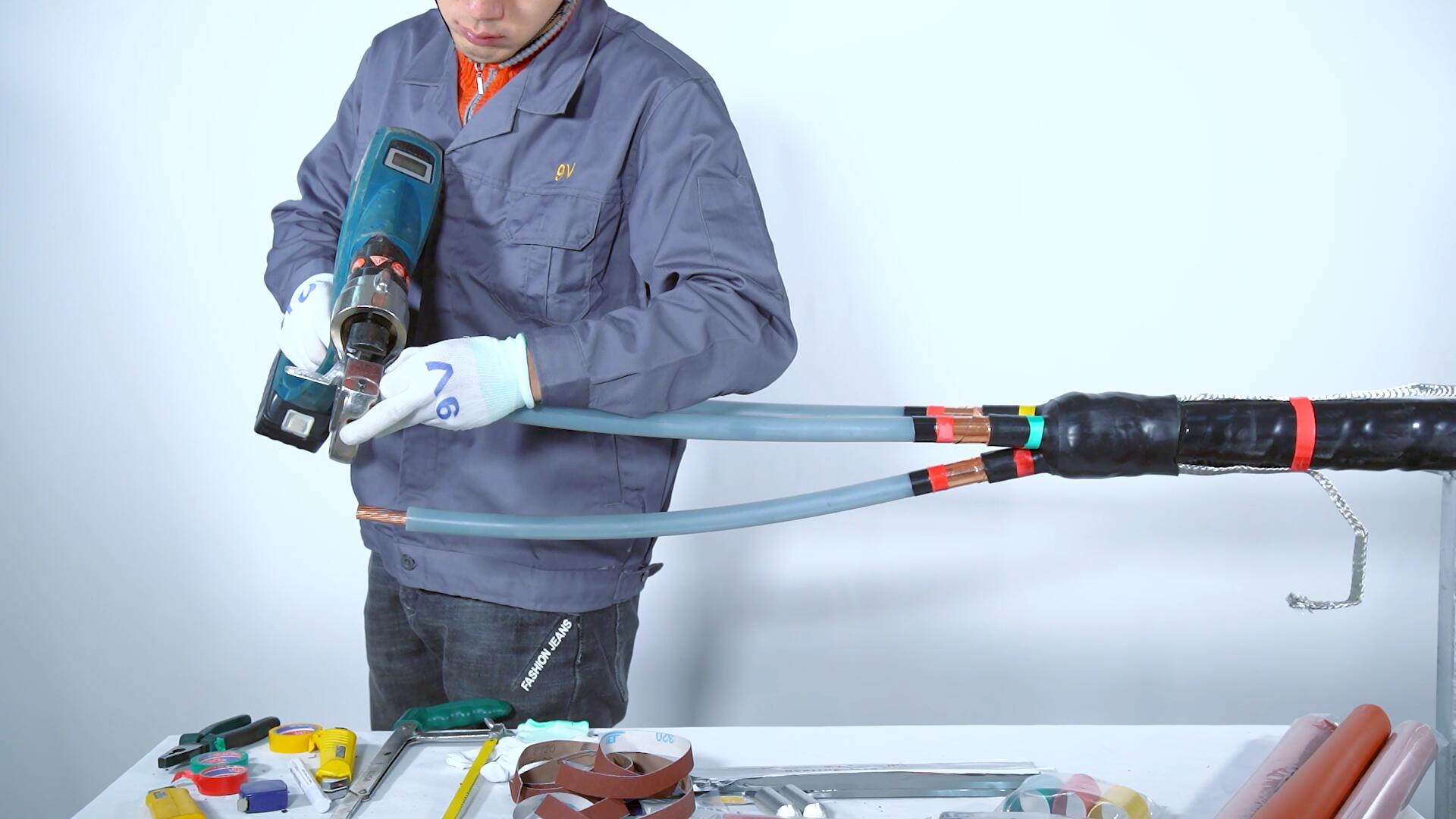Summary of common problems in the construction of cable accessories
We often come into contact with power cable accessories in the construction of high-voltage power cables, the purpose of which is to restore the electrical insulation performance of the cables to achieve reliable connections between electrical equipment. The operation of power cable lines is one of the important links in power production. The safety of cable line operation is related to the safety of production of enterprises and the safety of people's lives and property. The following will explain the problems and solutions often encountered in the installation and construction of power cable accessories.

1. What is the size standard for cable splitting?
In principle, we require that the length of the phase separation of the cable be between 1.2m and 1.5m. However, it can be dealt with on a case-by-case basis.
2. Why wrap the copper shield with tape at the end of the copper shield after phase separation?
This is done to keep the copper shield from falling apart. In order to ensure that the cable below the cable head maintains its original characteristics after re-installation, the copper shield should be completely shrunk inside when shrinking the heat (cold) shrink sleeve. If the copper shield is scattered, restore it and try to keep the original fit.
3. What is the role of copper shielding?
Under normal circumstances, it passes the capacitive current and acts as a shield against the electric field at the same time. If the copper shielding layer is not retained as required, it will not be able to shield the electric field and bring hidden dangers.
4. What are the consequences of stripping all the conductive layers?
When making cables on site, people often strip off all the semi-conductive layers above the three-pronged gloves according to conventional practices, which is very dangerous. Because after the power is sent, the surface of the cable between the branch glove stress tube and the stress cone will generate induced electricity. In this case, if the ground wire of the American cable head is installed according to the correct method, after a long period of operation, the section of the cable that generates induced electricity will discharge the ground wire, and in severe cases, the heat shrinkable sleeve will be burned or even burned out. Therefore, the semiconducting layer must be kept strictly according to the process dimensions.
5. What are the consequences of rough production process?
In the construction process, if you do not pay attention to the details, it will bring many hidden dangers to the safe operation of the equipment. For example, when stripping the copper shield and semi-conductive layer of the cable, the force is too large or uneven, which will damage the semi-conductive layer or the main insulation; the scratches on the main insulation are not handled or handled completely. It will reduce the creepage distance, and in severe cases, it is easy to cause the equipment to burn or even explode.

6. What are the consequences of reverse installation or installation of mismatched stress cones?
Reverse installation of the stress cone will cause the insulation distance inside the T body to become smaller, the semi-conductive layer cannot be overlapped, and the full shielding will be destroyed. If a mismatched stress cone is installed, the stress cone will reduce its effect of stress relief and uniform electric field, resulting in excessive concentration of electric field stress, which is prone to partial discharge and breakdown.
7. Why do chamfers need to be made at the end of the main insulation when installing the stress cone?
One is to effectively control the axial stress of the insulating end so that it is within the allowable range that the insulating material can bear. Second, it is easy to install and avoid scratching the inner surface of the stress cone.
8. What should I do if I forget to install the stress cone?
In principle, the crimp terminal is sawed off and re-installed. In special cases, silicone grease can be applied to the inner surface of the stress cone and the terminal, and the stress cone can be installed hard, provided that the terminal is smooth and burrs are strictly prohibited. This method can only be used as a last resort, and should be redone as much as possible when time permits.
9. What are the precautions and standards for installing T body and stress cone?
When installing the stress cone, wrap the end of the cable conductor with tape to avoid scratching the inner surface of the stress cone. Push down the stress cone until the main insulation is exposed on the upper part. At this time, the semi-conductive layer at the tail of the stress cone should be reliably overlapped with the semi-conductive layer of the cable. When installing the T body, hold the lower end of the stress cone with one hand (do not apply force upwards or downwards), and push the T body downward with the other hand until the terminal reaches the T body. At this time, the stress cone should be About 3mm is exposed outside the T body, and its semiconducting layer and the semiconducting layer of the T body have been reliably overlapped.

10. Copper-aluminum coordination of cables and terminals?
In many cases, the materials of cables and terminals do not correspond to each other due to some reasons. In this case, the terminal should be replaced. Because if copper cables use aluminum terminals or aluminum cables use copper terminals, electrochemical reactions will occur at the connection between the two metals, reducing the service life of the equipment.
11. Why do you need to rotate 90 degrees when crimping the terminal and press it from top to bottom?
If the crimping is kept in one direction, the cross-section of the crimping terminal will become flat and the flow area will be reduced. The purpose of rotation is to make the cross-sectional area as large as possible. Pressing from top to bottom is to ensure that there is no gap inside the terminal, the extension of the terminal is downward, and the overall size will not become longer.
12. What are the consequences of the incorrect direction of the crimp terminal?
When the cable is installed on the device, the contact surfaces of the crimp terminal and the sleeve should be in close contact. If the direction of the terminal is not correct, there will be a gap between the contact surface and the sleeve, and even the surface contact will become a line contact, which will increase the contact resistance, and will overheat or even burn the equipment after long-term operation.
13. Cable cleaner
When cleaning cables and cable accessories, you should pay attention to the direction of cleaning. The correct method is: start from the end of the wire and clean it downwards in sequence. Do not clean back and forth. If you clean back and forth, it is easy to leave the tiny carbon particles of the semiconductive layer in the main On top of the insulation, reducing the insulation performance. In the use of silicone grease, silicone grease should be applied to all parts that are in contact with the surface. Its function is to insulate, seal and lubricate.

14. Why can't Vaseline be used instead of silicone grease?
Because the main component of cable accessories is EPDM rubber, if Vaseline is used, it will chemically react with the components inside, destroy its organizational structure and reduce insulation performance.
15. What dust cap can not replace the insulating cap?
First of all, there are essential differences between dust caps and insulating caps. The dust cap is only to prevent dust before leaving the factory, and it has no effect when it arrives at the site. Only the structure of the insulating cap is matched with the cable accessories on site.
16. What will happen if the ground wire is not firmly connected?
It will discharge at the connection with the ground wire. Detection method: use a high-voltage electroscope to test it will show that there is electricity.
17. What should I do if the semi-conductive layer is stripped too much without reserved cable?
This happens from time to time, don't worry if it happens. The following measures should be taken: restore it layer by layer with the semiconducting layer to be as consistent as possible with the original, and ensure reliable contact with the semiconducting layer of the accessory.
18. What measures should be taken to remedy the scratches on the main insulation when stripping the semi-conductive layer of the cable?
Depends on the depth of the scratch. If it is very serious, it is recommended to do it again. If only the surface is scratched, it should be polished with 40-mesh gauze and then cleaned.
19. Why do some cable heads show power when tested with a high-voltage electroscope after power transmission?
The main reason is that there is a potential difference. First, the semi-conductive layer is not well connected, and the second is the virtual connection of the ground wire.
Hotline: +86 18001554818 / +86 18068406516



















